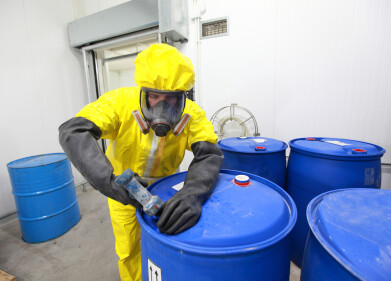-

-
 Limestone Sample Result
Limestone Sample Result -
 Shale Sample Result
Shale Sample Result
Elemental analysis
Rigaku EDXRF for elemental determination of drill cuttings
Jun 20 2018
When drilling for crude oil and natural gas, rock cuttings are brought to the surface by the drilling mud for examination and characterisation of the rock strata. Mineralogy and elemental composition are some of the tests that go into the lithology of the rock layers, giving valuable information on the formation being drilled for well logging and positioning of the drill bit when geosteering. X-ray fluorescence (XRF) gives elemental composition of the cuttings, an important part of the overall well logging system. To meet the industry needs, Applied Rigaku Technologies offers the NEX QC+ QuantEZ Energy Dispersive XRF (EDXRF) analyser for measuring elemental composition of various geological materials.
Sample Preparation
Samples often are measured in course form with particle size up to 5mm. For course samples it is recommended to use a sample spinner to average out miscellaneous X-ray scatter effects. Optimum results are obtained by further grinding the sample to a dry, homogeneous powder ~100-200 mesh (150-75um particle size).
Fill a standard 32mm diameter XRF sample cup with material, typically 5g, and measure directly. For optimum sensitivity to measuring low levels of light elements Na-Cl, a powder sample can be prepared as a hydraulically pressed pellet and helium purge atmosphere is used.
Methodology
FP (Fundamental parameters) is used to generate semi-quant results without the need for any reference standards. The semi-quant approach is ideal for general screening and comparative characterisation. Rigaku RPF-SQX is an advanced FP methodology that automatically models background and deconvolutes any peak overlaps. To optimise the FP model the QuantEZ software includes the feature for the user to easily create a Matching Library using one or more samples that have been characterised and assayed by a reference technique such as ICP. In this way the FP model can be matched to site samples and referee results and provide fully quantified results.
In general the Rigaku FP mythology is used to measure and characterise the geological strata encountered during drilling, including: shale (slate), limestone, clay, sand, sandstone and siltstone, etc.
Examples are shown here of the QuantEZ report of a shale and a limestone sample. (Please refer to image A & B**)
A result is stored and can be printed, or transmitted to a spreadsheet file locally or on a network folder. Results can also be transmitted to a LIMS system by comma-delimited ASCII stream.
Spectra are generated using element KLM markers to identify peaks. Qualitative viewing of spectra can also be used to see the presence of unexpected elements and compare various samples to view overall composition differences.
Features
- Transportable in hard-shell Pelican case with optional laptop PC
- Rugged end-window transmission X-ray tube for extended tube life
- X-rays on only during measurements
- High performance SDD detector
- Intuitive software with both empirical calibration and FP capabilities
- Rigaku RPF-SQX FP software
- Pre-set templates make creating application methods simple
- Users can easily create Matching Library to match site-specific standards closely to XRF FP model
- Calculation Parameters to automatically report KUT number and other algebraic relationships
Conclusion
EDXRF provides a rapid, non-destructive means of semi-quantitative measurement for screening, identification, as well as elemental quantification of metals, solids, powder, pellets, thin films and liquids. QuantEZ software allows users to optimise the characterisation of cuttings by easily creating a Matching Library based on representative samples assayed by a referee technique. The NEX QC+ QuantEZ powerful yet simple and intuitive software gives is an ideal system for measuring elemental composition of drill cuttings in the drill site or in the lab.
Click here to request a full copy of the application report.
Digital Edition
PIN 25.5 Oct/Nov 2024
November 2024
Analytical Instrumentation - Picturing Viscosity – How Can a Viscometer or a Rheometer Benefit You? - Sustainable Grease Formulations: Evaluating Key Performance Parameters and Testing Method...
View all digital editions
Events
Jan 20 2025 San Diego, CA, USA
Jan 22 2025 Tokyo, Japan
Jan 25 2025 San Diego, CA, USA
SPE Hydraulic Fracturing Technology Conference and Exhibition
Feb 04 2025 The Woodlands, TX, USA
Feb 05 2025 Guangzhou, China


















